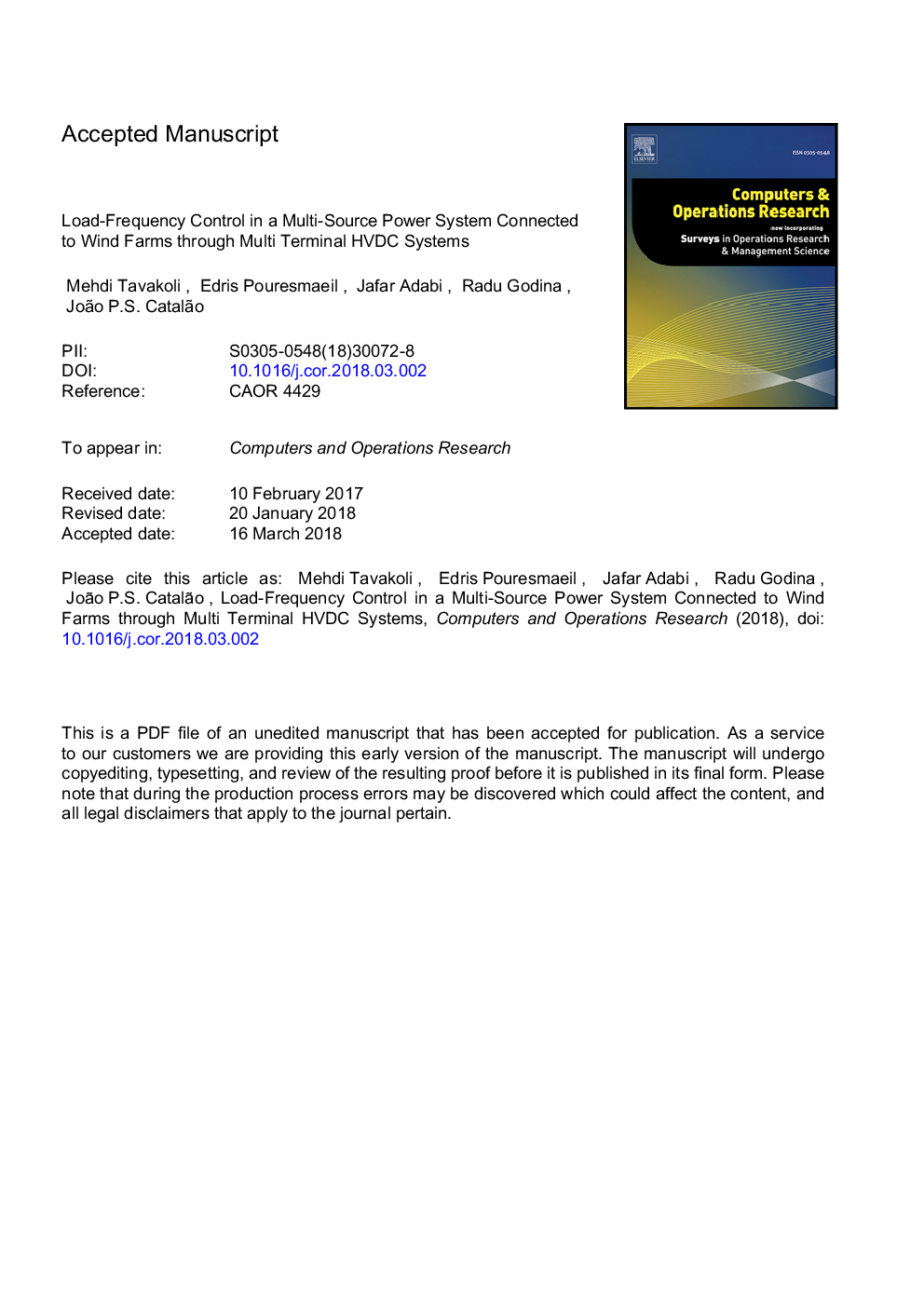| Article ID | Journal | Published Year | Pages | File Type |
|---|---|---|---|---|
| 6892608 | Computers & Operations Research | 2018 | 28 Pages |
Abstract
This paper addresses the wind farm contribution in frequency control during the integration in the power grid. In the proposed model, the wind farm utilizes inertia control and droop control techniques with the purpose of improving the frequency regulation. In order to achieve optimal results, all the parameters of the controllers for the different units in the power grid are obtained by using a particle swarm optimization algorithm (PSO) and by introducing a modified objective function instead of a conventional objective function e.g., Integral Time-weighted Absolute Error (ITAE). Also, different constraints such as reheat turbine, time delay, governor dead band and generation rate constraint (GRC) are considered for thermal and hydro units with the aim of studying a more realistic power system, which is the main contribution of this paper when compared to the oth0er works in this field. It is shown that, in case of a perturbation in power demand, the system frequency will recover quickly and effectively in comparison with the traditional approaches. In addition, a sensitivity test is carried out in a single power grid area in order to examine the effectiveness of the proposed approach. Then, the system is extended to a multi-area power system using a multi-terminal HVDC for further investigation of the suggested strategy. Simulation results are presented in order to assess the performance of the proposed approach in the power system.
Related Topics
Physical Sciences and Engineering
Computer Science
Computer Science (General)
Authors
Mehdi Tavakoli, Edris Pouresmaeil, Jafar Adabi, Radu Godina, João P.S. Catalão,
